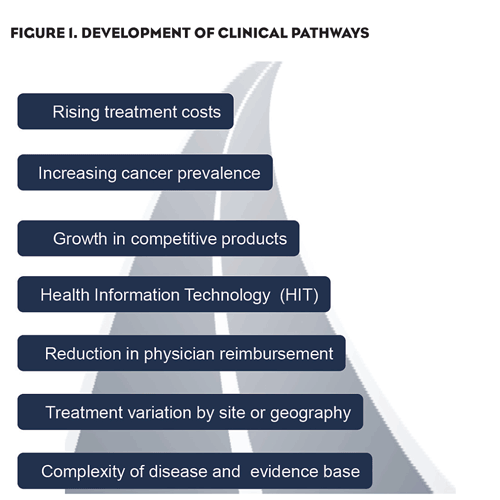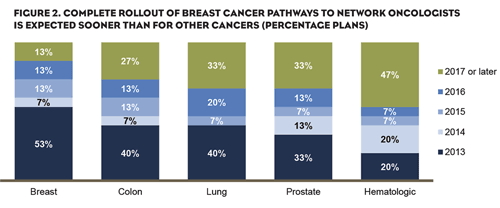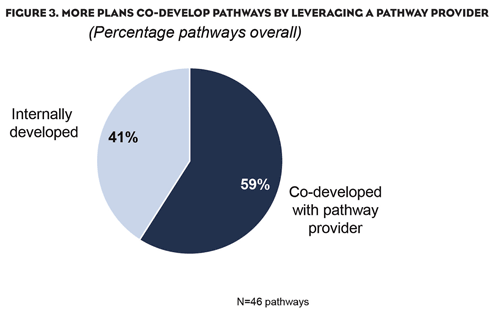Oncology pathways are detailed, evidence-based care processes that sometimes specify the single best treatment or a limited range of options for a particular group of patients. As oncology pathways gain more traction, marketers may need to employ different strategies to protect their brand access.
Here are four facts about oncology pathways that every marketer should know.
1. Cost Pressures Help Drive Pathway Development
Rising treatment costs, health information technology (HIT) and the need for greater standardization of care are some of the main factors spurring oncology pathway development (see Figure 1).
Another driver is the reduction in physician reimbursement, which is compelling many oncologists to migrate to institutional practices and large groups to reduce operating costs and gain economies of scale. Many of these institutions and large groups are also participating in emerging care models, such as accountable care organizations (ACOs), which are more likely to implement pathways to reduce practice variation and improve quality.
2. Breast Cancer Pathways Take Precedence
By 2016, more than half of health plans with oncology pathways expect to complete their pathway rollouts to network oncologists. Breast cancer pathways are a particular priority for health plans. More than half of health plans have already rolled out breast cancer pathways to all network oncologists (see Figure 2).
However, many plans are choosing to forgo a complete rollout in cancer types with greater disease complexity or narrower treatment options. Others are waiting until broader provider buy-in exists. For now, these plans will continue implementing pilots of limited scope, with the goal of leveraging quality and/or cost reduction achievements during future negotiations with network oncologists.
As leading plans demonstrate success with implementation efforts, other plans will adopt similar approaches. Expanded implementation and success may lead to discussions to narrow treatment selections included in pathways, resulting in brand access risk.
3. Most Plans Seek Pathway Provider Assistance
Most plans co-develop oncology pathways with pathway providers like P4 Healthcare, US Oncology, and Via Oncology (see Figure 3). Leveraging pathway providers helps plans gain distance from clinical decisions while reducing oncologist resistance.
How plans utilize pathway providers varies. Plans also take advantage of pathway providers’ capabilities to:
- Track and measure pathway implementation through advanced HIT.
- Conduct clinical reviews including evidence-based data.
- Review and approve oncologists’ off-pathway requests.
Leveraged by pathway providers to encourage greater network oncologist buy-in, regional and/or national key opinion leaders (KOLs) also highly impact pathway development, although they are less frequently included in the process. Those plans that prefer to develop pathways with providers often engage medical directors, who are typically responsible for managing overall health plan operations and medical costs.
4. Influencing Brand Inclusion On Pathways
As oncology pathways grow in influence, companies should segment health plans by their level of implementation—from plans that are leading in pathway implementation, such as Geisinger Health Plan and Blue Cross Blue Shield of Michigan, to those that are just dabbling in pathways. Specifically, companies should differentiate where plans fall on the continuum of implementation based on:
- The breadth of implementation.
- The levels of pathway adherence and measurement.
By segmenting customers in this manner, companies can gain a better understanding of health plan capabilities and tailor specific customer strategies based on their potential to limit or restrict brand access. For example, companies may want to:
- Develop partnerships with pathway providers aligning with plans.
- Develop clinical trials to meet market needs (such as comparative effectiveness versus placebo controlled).
- Prioritize successfully positioning brands within National Comprehensive Care Network (NCCN) guidelines, the typical starting point for plans creating pathways.
- Identify varying plan implementation segments for key prescribers and the potential impact on brand utilization.
This will help marketers ensure optimal positioning for brands as pathways continue to evolve in the next few years.






